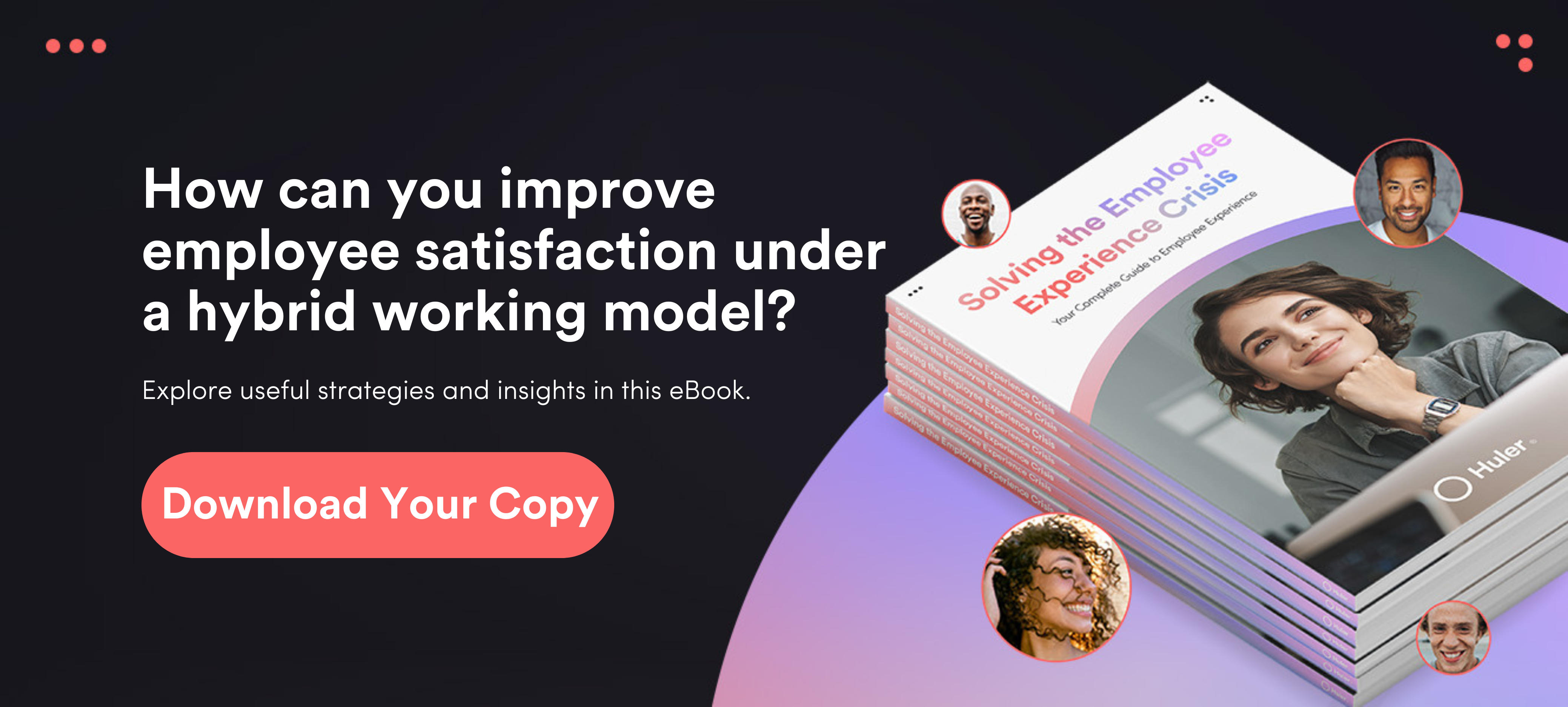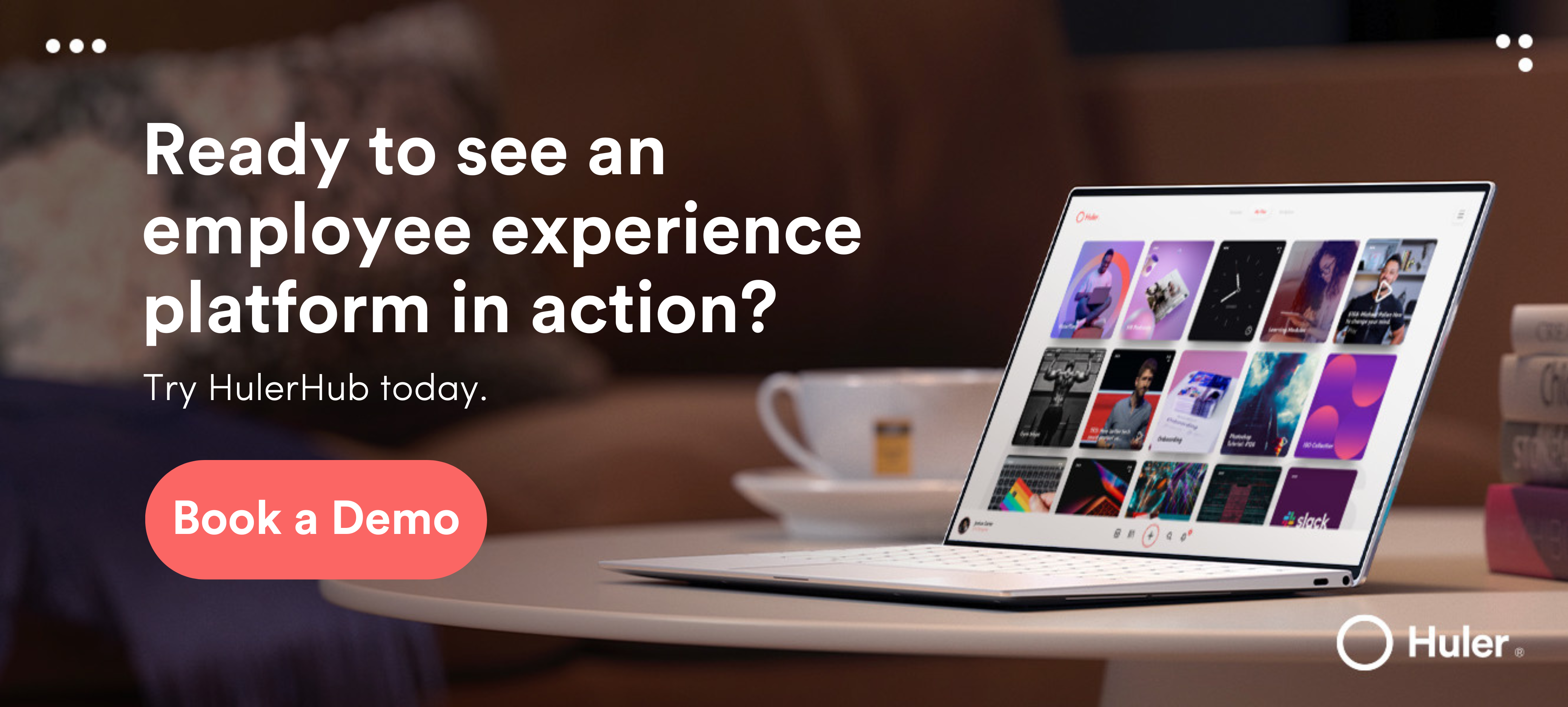Digital transformation can revolutionise your business — when done right. The fact that 70% of digital transformation programs fail should tell you just how important it is to getting it right.¹ If you don’t, it’s bound to disrupt a good employee experience. And it’s easy to understand why.
Digital transformation means changing the workplace and asking employees to switch the tools they use, their processes, and even their behaviour. But if you get it right, the pros far outweigh the cons. Employees with access to a high-quality digital workplace experience are 121% more likely to feel that their employer values their contributions.²
Employee experience and digital transformation are two sides of the same coin. When employees have the tools they need to do their jobs more efficiently, their employee experience is improved. And this improved employee experience means they’ll be more on board with any digital transformation initiatives you put in front of them.
In this article, we’re going to take you through how employee experience touch points and effective digital transformation processes are connected — and how you can see the benefits of both in your company.
How employee experience and digital transformation are connected
Digital transformation involves integrating technologies throughout all areas of your business — and improving the employee experience. It’s vital to boosting business performance and return on investment (ROI). But, to do this, employee experience should take centre stage in your digital transformation journey.
The only way you’ll increase productivity and ROI is if employees understand how to use these digital tools well and actually enjoy using them. That’s why the main goal of digital transformation is to enhance employee experience. If it doesn’t, you won’t reap the rewards you imagined when embarking on your digital transformation journey.
It’s a critical path to realise greater productivity, improve retention and, ultimately, gain greater profitability. In fact, the ROI of a good employee experience can yield as much as 18% higher productivity and between 18% and 43% lower turnover rates.³
By leveraging digital transformation, businesses can create a positive cycle: if employees have a good experience (particularly if they’ve been consulted on the digital transformation approach), they are more likely to embrace it, which builds trust and confidence in their employer, increasing engagement and reducing turnover.
1. Improving remote, hybrid and flexible working
In a world where working arrangements are continually evolving, adapting your workplace to ensure every employee has a positive experience is more important than ever. After all, fostering a sense of connection and understanding between teams is essential when your workforce is physically fragmented. In this environment, two of the most important pillars of making this a success are (you guessed it) employee experience and digital transformation.
Digital transformation brings in the right technology to make communication easy and intuitive, which enhances collaboration. And you can significantly enhance employee’s digital experience if you enable your people to:
- use the right tools in the right way
- work productively with their colleagues across different countries and time zones
- quickly and easily connect with the resources and expertise they need.
Besides technology that lets employees work efficiently, they also need to feel connected to their colleagues and the company. That means creating an experience that goes beyond just productivity to include the ability to talk to colleagues, receive recognition, and feel part of the team no matter where they’re working from.
2. Enhancing learning and development
People want to learn and grow and inevitably won’t stay in one place forever — but developing in your role doesn’t have to mean changing your role or leaving the business. Emphasising learning and development for your employees means that they can learn and grow in their current role, or into another role in the business, instead of leaving to seek that development.
With workplace technology such as AI-powered learning experience platforms, machine learning and gamification, you can deliver a more personalised and enhanced digital employee experience. In turn, employees gain new skills and knowledge and feel more confident that the business is investing in them. This is good for them, it makes business sense and reduces turnover to boot.
Continued learning and development are critical to employee retention, and the numbers speak for themselves:
- 94% of employees indicated that they would stay at their jobs longer if employers invested in their careers and development.⁴
- Businesses that prioritise employee experience have more engaged employees and see a 41% reduction in absenteeism.⁵
- These businesses also see a 17% increase in employee productivity.⁶
3. Helping people feel recognised
Using a digital transformation program to bring in new technology that has a dedicated employee recognition feature is one of the best ways to recognise employees’ milestones and contributions, leading the way for an effective peer recognition program:
- It’s easy to implement: Recognition is no longer something you only see in a monthly newsletter or sent by private email. With the right employee intranet, individuals and teams can now be congratulated through recognition platforms, video announcements or on the company’s digital noticeboard. A dedicated feature makes it easy to give recognition and helps foster a positive digital culture.
- It’s peer-to-peer: As much as employees value praise from their managers, it often means more coming from colleagues. Peer feedback is a truly powerful tool that can support continuous performance improvement of as much as 14%.⁷ Enabling employees to give and receive peer feedback can help create a positive work culture that values teamwork, innovation, and growth, ultimately leading to success in digital transformation initiatives.
- It’s public: Public recognition boosts accountability. Employees can see the good job they’re being recognised for, encourage others to recognise others, and so create a recognition cycle and foster a culture of recognition within the company. This can motivate employees to achieve their goals and support digital transformation initiatives.
Recognition is a powerful way to enhance the employee experience. Research shows that 82% of employees want to be recognised for their contributions, while 92% said that recognition motivates them to continue or repeat the action they’ve been recognised for.⁸ This goes a long way towards reinforcing great performance.
How to make sure your digital transformation approach improves the employee experience
Understand what your employees need — and want
Ploughing ahead with implementing changes without consulting your employees is often a recipe for disaster. Research shows that employee resistance and poor management support are the causes of most change initiatives to fail.⁹
That’s why a big undertaking like a digital transformation strategy should start with honest and transparent conversations. Particularly in larger organisations, it can seem challenging to get your employees’ views, but that’s still no excuse. There are many communication channels that you can employ to understand what your employees need — and what they want — that will help give direction to your digital transformation journey.
Then, instead of burdening employees with tools they don’t need and don’t want to use, you can employ a people-first strategy to give them what they need and want.
Integrate everything
Even when employers understand what employees need and want, they don’t always put things together correctly, often because they adopt the wrong tech (45%) or have a lack of expertise in carrying through digital transformation efforts (53%).¹⁰
If the tools that employees need to complete work aren’t easy to find and essential information isn’t easy to access, not only are employees unable to do their work properly, but the way they work will become sluggish and clunky. This, in turn, will hinder their productivity, hurt your ROI and affect the overall employee experience.
An employee experience platform can help you marry the systems and technology for a successful digital transformation. Sitting on top of these systems and technology, an employee experience platform acts as a digital experience layer. It lets employees access everything they need to do their job effectively in one place without having to navigate multiple systems or applications, increasing productivity and bolstering employee experience.
Transform your employee experience with an employee experience platform
Successful digital transformation strategies are crucial for businesses that want to grow. To drive fundamental change, you need to be using the right technology in the right way to support a good employee experience. With hybrid, remote and flexible working — in other words, a fragmented workforce — making connections through technology has become a necessity, which means digital transformation and employee experience go hand in hand.
HulerHub is a powerful employee experience platform that can help businesses kickstart their digital transformation efforts by:
- Consolidating all your tools and resources into one central hub, maximising the ROI of your existing tech stack
- Enabling employees to empower each other with a dedicated employee recognition feature
- Allowing people teams and managers to share Articles (internal comms) with specific teams or employee groups, with a Notification Centre keeping notifications in one place and reducing the reliance on emails
HulerHub enables employees to collaborate, communicate, access resources, and tools and access learning and development opportunities. Kickstart your digital transformation journey while enhancing your employee engagement in one go: book a demo with HulerHub today.
¹ The ‘How’ of Transformation.
² Research: A Concrete Way to Measure its Impact on an Employee’s At-Work Experience.
³ The Benefits of Employee Engagement.
⁴ The Rise and Responsibility of Talent Development in the New Labor Market.
⁵ Employee Engagement vs. Employee Satisfaction and Organizational Culture.
⁶ Employee Engagement vs. Employee Satisfaction and Organizational Culture.
⁷ Motivate Employees With Ongoing, Forward-Looking Feedback.
⁸ 2022 Engagement and Retention Report.
⁹ Change Management Statistics You Need to Know in 2023.
¹⁰ The Expert Take on Why Digital Transformation Fails and How to Avoid it.






